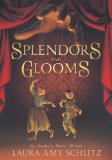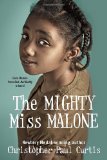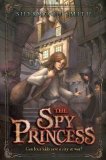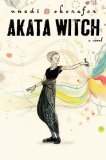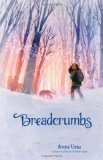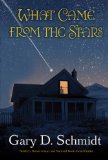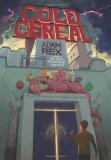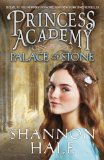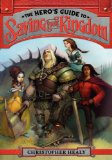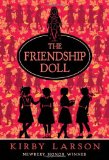Review of Splendors and Glooms, by Laura Amy Schlitz
by Laura Amy Schlitz
Candlewick Press, 2012. 384 pages.
Splendors and Glooms has been nominated for consideration in two groups I’m part of: Capitol Choices, and the Cybils Awards. I’d already heard speculation about it for the Newbery Medal on Heavy Medal blog. So I wasn’t surprised to find excellent writing. The story, however, isn’t up my alley.
We’ve got a sinister gothic horror tale, beginning in the fogs of London in 1854. There’s a creepy puppeteer who bullies the boy and girl who live with him. There’s a poor little rich girl who lives among memories of her four dead brothers and sisters. And there’s a dying witch, living removed from London, who desperately wants a child to steal her magic fire opal so that she can give it up, so that she won’t be consumed by its fire.
Fans call the book “atmospheric.” I found myself calling it “creepy.” Now, the creepiness is wonderfully crafted. We feel the sinister squalor in which the children live with Grisini, the puppetmaster. We feel the impending doom of Clara’s obsession with the puppets.
Here’s a conversation between the children who live with Grisini after the rich girl, Clara, has disappeared.
Parsefall grabbed her wrist and squeezed it warningly. “We can’t tell the coppers,” he hissed. “There ain’t nuffink to tell. We don’t know nuffink.”
“We know that Grisini knew two other children who disappeared. It must mean something,” hissed Lizzie Rose. “Perhaps the coppers could find out what it is. It might help them find Clara!”
“Grisini would kill us,” Parsefall said desperately. He dug his fingernails into her hand. “If we peached on him, he’d kill us. You don’t know ‘im the way I do.” He heard his voice rise and lowered it again. “Promise me you won’t go to the coppers.”
Lizzie Rose gave a little shiver. She wasn’t promising anything.
So the story is spooky, with slow-growing realization that these children are in the thick of something bad, something dangerous. But on the other hand, the plot is very slow-moving, and by the end the revelations have been foreshadowed so many times, they’re rather anticlimactic. The characters aren’t very likeable, and I found the book awfully easy to put down along the way.
What do you think? Many are lauding this book as a prime Newbery candidate. Laura Amy Schlitz certainly uses language richly and creates a setting where you can almost feel the fog clinging to your clothes. For the Cybils, I’m not sure I can recommend this book as one having kid appeal. But perhaps I’m simply the wrong audience, since in general I don’t like creepy books. I know lots of kids do. If you’ve read the book, I’m curious if you thought the heavy foreshadowing was a flaw or a strength. Feel free to discuss spoilers in the comments.
Find this review on Sonderbooks at: www.sonderbooks.com/Childrens_Fiction/splendors_and_glooms.html
Disclosure: I am an Amazon Affiliate, and will earn a small percentage if you order a book on Amazon after clicking through from my site.
Source: This review is based on a library book from the Fairfax County Public Library.
Disclaimer: I am a professional librarian, but I write the posts for my website and blogs entirely on my own time. The views expressed are solely my own, and in no way represent the official views of my employer or of any committee or group of which I am part.
